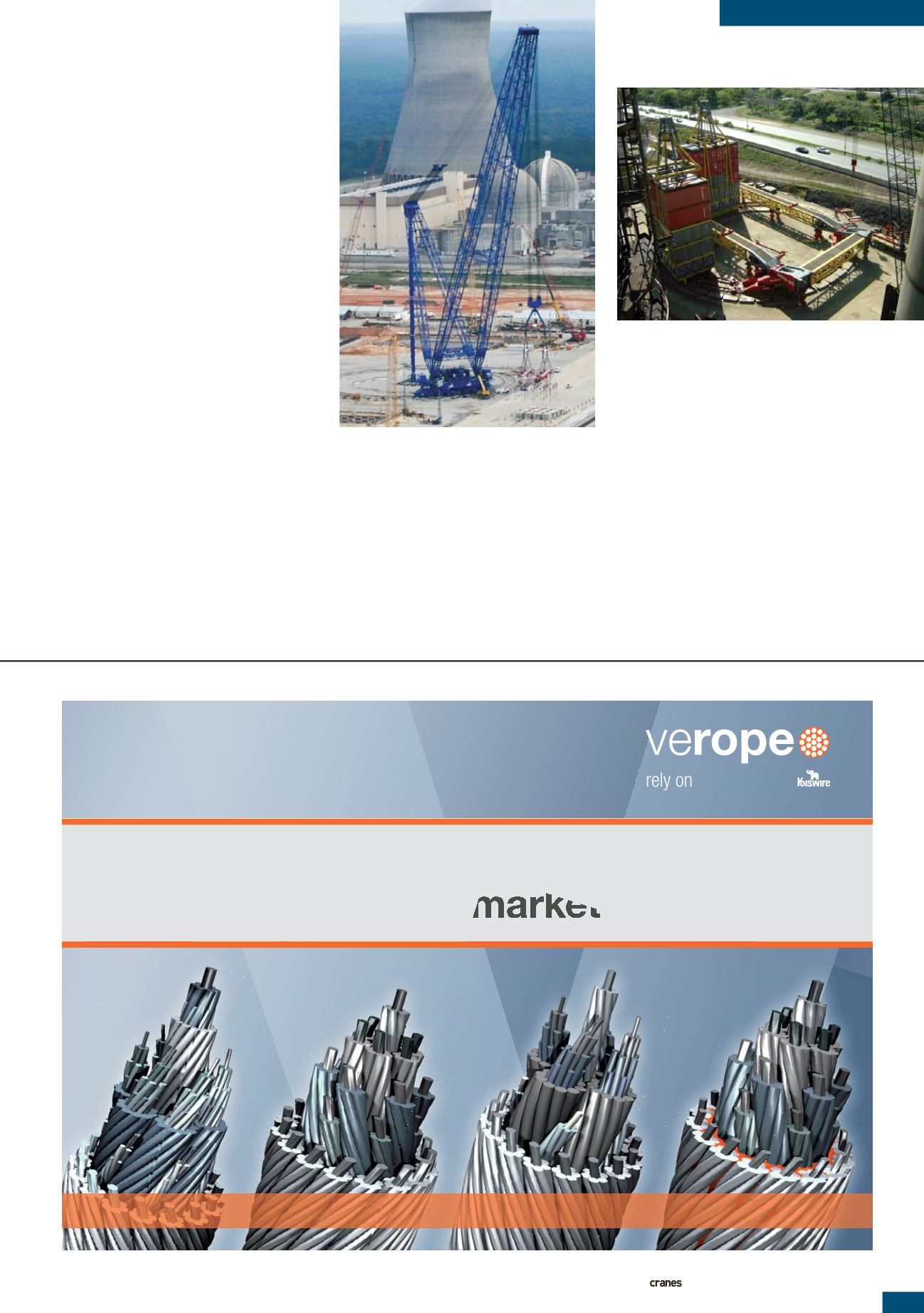
INTERNATIONAL AND SPECIALIZED TRANSPORT
■
SEPTEMBER 2013
37
THE KNOWLEDGE
necessarily be looking for a certain capacity
machine but more for a machine with a
certain capacity at a given radius. Knowing
this, the capacity alone becomes much
less important during the planning stage
than the capacity of a machine given a
certain radius. This introduces a challenge,
though, as it is much easier to analyse a
crane capacity than is to analyse a crane
capacity at a certain radius, especially
because this capacity changes with every
change in radius.
To avoid that a multitude of charts have
to be reviewed, which is a time consuming
exercise, so we can make use of a crane
chart overview. Such a chart provides a
basic indication of what capacity crane is
required to perform a certain lift. Crane
chart overviews are often separated in
hydraulic cranes and lattice boom cranes.
EXAMPLE 1:
A jobsite requires an hydraulic
crane that needs to make three lifts: 80
tonnes at 10 metres, 10 tonnes at 20 metres
and 10 tonnes at 7 metres.
According to the hydraulic crane chart
overview the first lift can be performed
with a 250 tonne type crane, the second lift
can be performed with a 120 tonne type
crane and the last lift requires a 35 tonne
type machine. In summary, all three lifts
could be performed with a 250 tonne type
machine. With this knowledge the search
for the actual machine that can be planned
for this job becomes much easier.
Note that the hydraulic crane chart
overview does not specify boom length or
boom angle or obstructions in the lift path
or the use of additional counterweight or
a jib, etc. It provides the user with an
order of magnitude of the required
crane capacity.
Radius
The radius of a lift is generally measured
from the centre of rotation to the centre
of the hook block of the crane. The centre
of rotation is (often) the centre of the
slew ring. This definition is true for all
hydraulic cranes and crawler cranes. The
lines started blurring with the introduction
of the ring attachment. The radius can now
be measured from the centre of the ring
or from the edge of the ring. Common
sense would indicate that the radius would
have to be measured from the centre of
rotation but things are not all that straight
forward. If the radius of a ring type crane is
measured from the centre of the ring (for
this example the ring diameter is 10 m),
The 125D AFRD
from Bigge
Mammoet MSG 50
verope Special Hoist Rope –
Quality is our niche market
vero
top XP
vero
top S
vero
top
vero
top E


